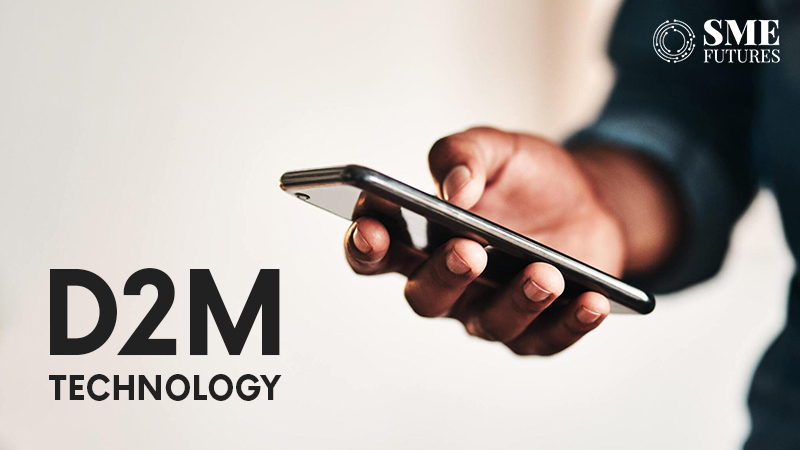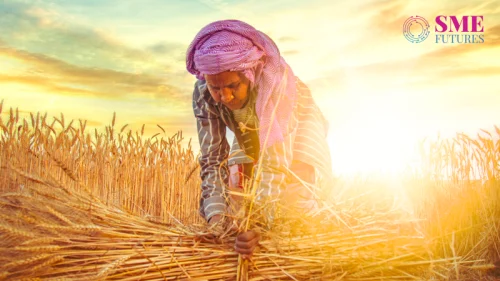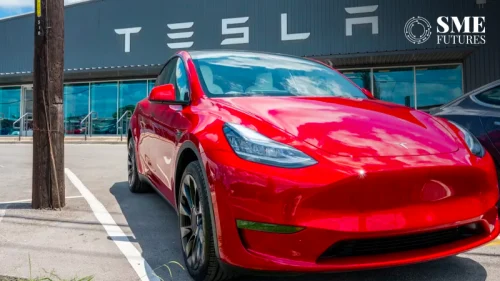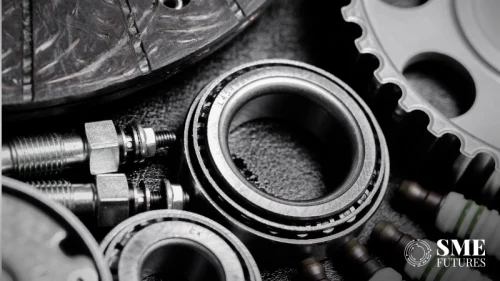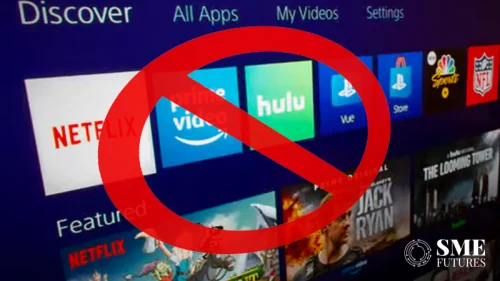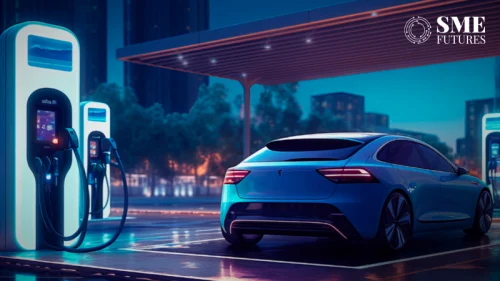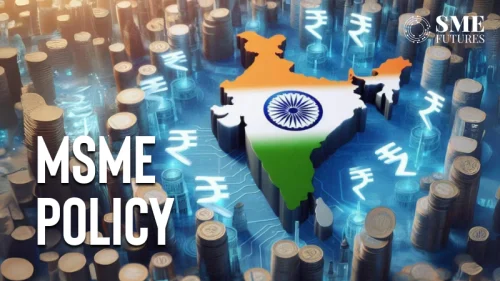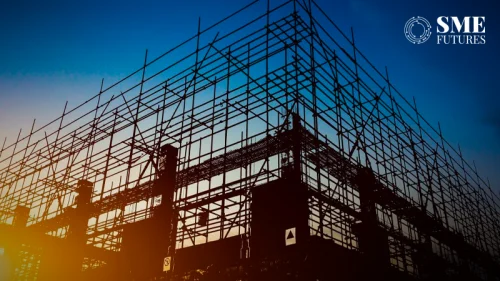Would you find it improbable if someone said, “You may soon be able to stream videos without a SIM card or an internet connection on your mobile phone”? The demand for personalised, on-demand content has led to the emergence of Direct to Mobile (D2M) technology which makes this possible.
Direct-to-mobile (D2M) is a novel idea that is gaining popularity in India, especially in the quickly changing technological landscape. From the business’s point of view, D2M technology enables stakeholders to directly reach consumers on their mobile devices, offering a personalised and targeted approach.
How does D2M work?
The technology that allows mobile phones to receive terrestrial digital TV is based on the convergence of broadcast and broadband. It would be comparable to how people listen to FM radio on their phones, which is made possible by the phone’s internal receiver picking up radio frequencies. Multimedia content can also be broadcast straight into phones via D2M.
The technology’s concept is that it might be used to directly broadcast content that is citizen-centric and that, among other things, could be used to combat fake news, send out emergency alerts, and provide support for disaster relief. In addition, it can be utilised to stream live sports, news, and other content to mobile devices. Furthermore, the video would stream without any delay and use no internet data at all.

Government’s efforts to implement D2M
To implement the homegrown technology effectively, the central government recently declared that 19 cities will soon host trials of domestic direct-to-mobile (D2M) technology created by Saankhya laboratories and IIT Kanpur. The viability of D2M, which enables the broadcasting of video and other multimedia material directly to mobile phones without the requirement for an active internet connection, is being investigated by the Department of Telecommunications (DoT) and India’s public service broadcaster, Prasar Bharati.
Addressing a broadcasting summit, Information and Broadcasting Secretary, Apurva Chandra said, “Currently, the spectrum in which digital terrestrial broadcasting is given is 470-582 Mhz. It was decided in 2021, that out of this frequency 526-582 Mhz will be coordinated and shared with broadcasting services and 5G IMT services. Subsequently, 56 Mhz out of 470-526 Mhz will be sufficient for D2M technology.”
Opportunities in the Indian market
The Government of India estimates that there are over 480 million households in the nation, of which roughly 190 million have televisions, and eight to nine crores still do not have one.
Additionally, currently there are 80 crore smartphones in our nation, and that number is predicted to reach 100 crores shortly. Consequently, practically everyone will own a smartphone, and Direct-To-Mobile gives the broadcast industry a chance to reach this demographic.
Furthermore, 69 per cent of the content accessed by users on their smartphones in India is in video format. The amount of data and content consumed would expand significantly when it reaches approximately 80 crore mobile phones, compared to the 19 crore households that currently consume it through television.
Public service delivery
Direct-to-mobile (D2M) can be used effectively in the delivery of public services like education, health, and information regarding the different welfare schemes of the government to the people. This holds special value because D2M has the potential to reach out to the masses without any intermediaries and the scale of penetration is going to be huge.
Current initiatives like ‘Swayam Prabha’ which provides 80 High-Quality Educational Channels through DTH (Direct to Home) across the length and breadth of the country on a 24/7 basis can be expanded to reach around 80 crore smartphone users. Similarly, D2M can be used to educate people about health and the government’s schemes, leading to the empowerment of citizens.
Dissemination of urgent information
D2M can emerge as a phenomenal technology for public broadcasting. This holds immense importance for a developing country like India where we have challenges in terms of disaster management and tackling fake news or violence in different parts of the country. In the era of information, fake news poses a challenge to governance, and busting it in a timely manner becomes crucial for modern-day democracies.
Cost-effective technology
Although India ranks third in terms of having the cheapest mobile data globally, we also need to take into consideration the affordability of data in India along with the rising prices of data plans. Also, there is a limitation to data consumption based on different plans.
Instead of relying on expensive and frequently unstable mobile broadband networks, the end user will be able to access an infinite amount of data and video (educational or entertainment) at a low-set monthly subscription thanks to the Converged Direct-To-Mobile (D2M) network.
There are challenges with D2M implementation regarding the integration of chips in smartphones to support the technology but that is a one-time cost. Saankhya Labs, which created the chips and dongles needed to integrate the D2M solution into phones, anticipates that the addition of new chips won’t have a significant impact on device prices.
“The chips will cost less than Rs 150 with large volumes, about 5-10 million, and the external dongles (USB DTV Receiver Dongle) would cost about Rs 500-700,” says Saankhya Labs CEO Parag Naik.
Personalised engagement by businesses
D2M allows businesses to craft personalized messages for individual users, leading to a more engaging and meaningful interaction. This level of personalisation enhances user experience and increases the likelihood of conversion. By directly targeting mobile users, businesses can optimise their marketing budgets, reaching a specific audience without incurring the expenses associated with broader advertising campaigns.
D2M also enables real-time communication, providing businesses with the ability to send timely updates, promotions, and alerts. This instantaneous connection fosters a sense of immediacy, crucial in industries like e-commerce, finance, and healthcare.
With the surge in e-commerce activities in India, D2M technology presents a golden opportunity for businesses to enhance customer engagement. Order confirmations, shipping updates, and personalized product recommendations through D2M will contribute to a seamless shopping experience.
Financial services
The financial sector in India stands to benefit significantly from D2M technology. Banks and financial institutions can utilize direct communication channels to provide account updates, transaction alerts, and personalized financial advice, fostering a stronger connection with their customers.
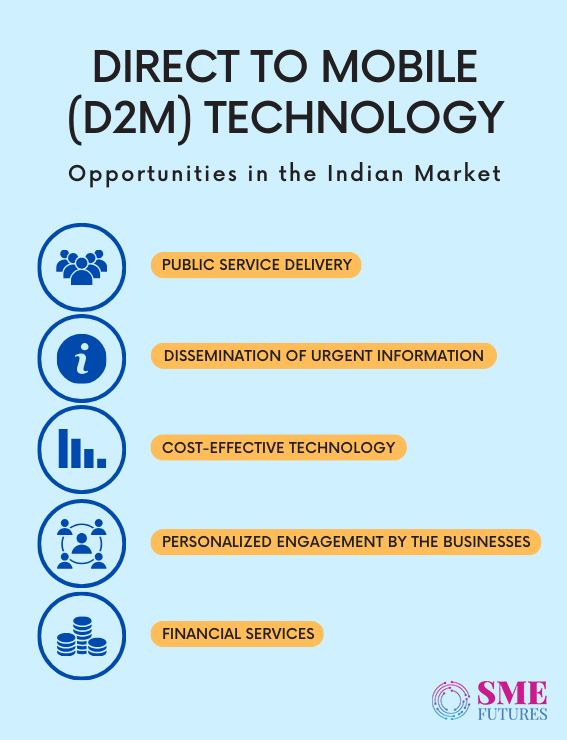
Challenges to implementing D2M technology in India
Although D2M has immense potential in providing the right information to citizens irrespective of algorithms and platforms, it has certain challenges as well. The biggest challenge in implementing D2M in India is bringing different stakeholders on board. The stakeholders include smartphone manufacturers, telecom service providers, regulatory bodies, business houses, and citizens.
Even as consumers stand to benefit through the choices provided by D2M, telecom providers feel threatened because their hegemony may be challenged.
The white paper on D2M brought out by IIT Kanpur says that the implementation of D2M in India shall be done through the Public Private Partnership (PPP) model. To do that effectively, the government needs to have extensive discussions with different key players. It also needs to come up with sound regulatory policies to keep the technology affordable while ensuring its promotion to the masses.
As the largest democracy and one of the biggest markets globally, India has not completely leveraged the power of the market. Most of the patents and Intellectual Property Rights (IPRs) are owned by foreign broadcasters. D2M is an intellectual property of India signifying ‘Atmanirbhar Bharat’.
Talking to the media, I&B Secretary Chandra said, “India can be a pioneer in this technology as India is the only country where D2M technology is being worked upon and is at a stage where it’s almost ready for adoption.”
The adoption of D2M technology promises transformative benefits, including lower costs for data transmission and access, increased network resilience and efficiency, and the potential to establish a national emergency alert system. D2M technology has the potential to reach over a billion mobile devices. How it unveils itself over time is to be seen.

